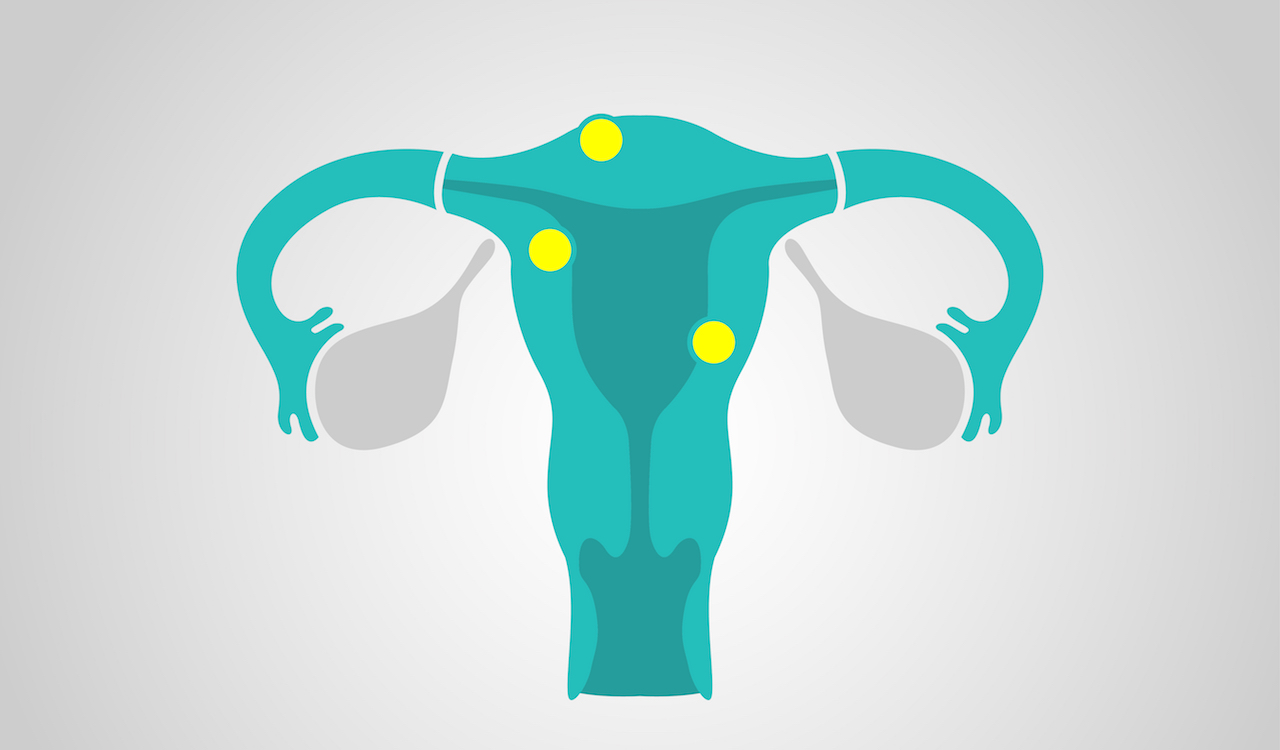As if we didn’t have enough to worry about, now we need to watch out for tumours in the uterus!
What are fibroids?
Uterine fibroids are non-cancerous tumours that grow within or along the walls of the uterus. The tumours are made of a small amount of cells and tissue, and grow quite quickly in size. They may grow in singles or clusters. A fibroid could be as small as an apple seed or the size of a grapefruit. In unusual cases, it may become bigger.
Fibroids are very common in women of reproductive age, and they usually shrink once you get to menopause. While it’s not clear what causes it, researchers believe that it could be influenced by hormones (oestrogen and progesterone levels) and genetics.
Who gets it?
- Age: Fibroids become more common between the ages of 30-40, and through to menopause. After menopause, fibroids may shrink.
- Family history: If your mother had fibroids, your risk is higher than of someone who has no family history of fibroids.
- Obesity: If you’re overweight, you are at a higher risk of developing fibroids.
- Diet: Eating a lot of processed and high-fat meat products is linked to a higher risk of fibroids.
To know whether you have fibroids, your doctor may only be able to do a diagnosis through a pelvic exam to check the health of your uterus, ovaries and vagina. Imaging tests will be done to confirm the diagnosis through an ultrasound, X-ray, CAT scan (CT) and magnetic resonance imaging (MRI).
Common symptoms:
- Feeling full and bloated in the pelvic area.
- Enlarged lower abdomen.
- Heavy or painful menstruation (can be heavy enough to cause anaemia).
- Urinating frequently.
- Pain during sex.
- Lower back pain.
- Complications during pregnancy and labour.
- Reproductive problems like infertility.
According to Dr Natalia Novikova, a gynaecologist and endoscopic surgeon at Mediclinic Cape Town, uterine fibroids are very common and about 80% of women may have fibroids at some time in their life. However, only a few women develop really unpleasant symptoms like bleeding irregularly and heavily, pain, pressure on bladder, back pain, and in some cases, difficulty falling pregnant.
Fibroids are common and in most cases, non-cancerous. Research shows that only one in four hundred fibroids have cancerous cells. The majority of fibroids (small in size and causing no discomfort) don’t need treatment.
The ones that grow quickly are more likely to have cancerous cells. So, it’s important to have regular check-ups to find any issues early and take action sooner rather than later. “There are many ways of treating fibroids depending on their type, location, size and a woman’s desire for fertility. A doctor will be able to help you find the option most suitable for you,” says Dr Novikova.
Treatment options
For fibroids that come with mild symptoms, anti-inflammatories or painkillers may be recommended to ease the pain. In other cases, your options include:
- Myomectomy: Surgery to remove fibroids without taking the healthy tissue of the uterus.
- Hysterectomy: Surgery to remove the uterus. This surgery is done when there are large fibroids, heavy bleeding, or you’re either near or past menopause or don’t want any children in the future.
- Endometrial ablation: The lining of the uterus is removed or destroyed to control severe bleeding.
- Myolysis: A needle is inserted into the fibroids. This is done through a laparoscopy using an electric current or freezing to destroy the fibroids.

